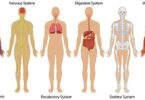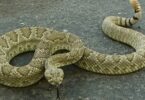Organic Chemistry – Carboxylic acid Derivatives:
Ques. CO2 on reaction with ethyl magnesium bromide gives
(a) Ethane
(b) Propanoic acid
(c) Acetic acid
Ques. Pyruvic acid is obtained by
(a) Oxidation of acetaldehyde cyanohydrin
(b) Oxidation of acetone cyanohydrin
(c) Oxidation of formaldehyde cyanohydrin
Ques. Acetic acid is manufactured by the fermentation of
(a) Ethanol
(b) Methanol
(c) Ethanal
(d) Methanal
Ques. The product obtained by dry distillation of calcium formate on reacting with ammonia yields
(a) Formamide
(b) Acetamide
(c) Acetaldehyde ammonia
(d) Urotropine
Related: Nuclear Chemistry Practice Test
Ques. Identify the wrong statement from the following
(a) Salicylic acid’s a monobasic acid
(b) Methyl salicylate is an ester
(c) Salicylic acid gives violet colour with neutral ferric chloride as well as brisk effervescence with sodium bicarbonate
(d) Methyl salicylate does not occur in natural oils
Ques. Ethyl acetate reacts with CH3MgBr to form
(a) Secondary alcohol
(b) Tertiary alcohol
(c) Primary alcohol and acid
(d) Acid
Ques. Which substance will give amide when heated with NH3?
(a) Potassium
(b) Hydrogen
(c) Ethane
(d) Nitrogen
Ques. In quick vinegar process of acetic acid, the temperature of mixture is
(a) 300 K
(b) 427 K
(c) 500 K
(d) 350 K
Related: Solutions Chapter in Chemistry (Questions)
Ques. Lactic acid on oxidation by alkaline potassium permanganate gives
(a) Tartaric acid
(b) Pyruvic acid
(c) Cinnamic acid
(d) Propionic acid
Ques. Formic acid can reduce
(a) Tollen’s reagent
(b) Mercuric chloride
(c) KMnO4
(d) None of these
Ques. When benzoic acid is treated with PCL5 at 100°C, it gives
(a) Benzoyl chloride
(b) o-chlorobenzoic acid
(c) p-chlorobenzoic acid
(d) Benzyl chloride
Ques. 0.2 gm of fine animal charcoal is mixed with half litre of acetic acid (-SM ) solution and shaken for 30 minutes
(a) The concentration of the solution decreases
(b) Concentration increases
(c) Concentration remains same
Related: Question Bank for Physics Wave Optics
Ques. The reaction of an ester RCOO R’ with an alcohol R”OH in the presence of an acid gives
(a) RCOOH
(b) R’COOH
(c) R”COOR
(d) RCOOR”
Ques. Dimerisation in carboxylic acid is due to
(a) Ionic bond
(b) Covalent bond
(c) Coordinate bond
(d) Intermolcular hydrogen bond
Ques. Which of the following is most acidic?
(a) Picric acid
(b) p-nitrophenol
(c) m-nitrophenol
(d) o-p dinitrophenol
Ques. A colourless organic compound gives brisk effervescences with a mixture of sodium nitrite and dil. HCl. It could be
(a) Glucose
(b) Oxalic acid
(c) Urea
(d) Benzoic acid
Related: Kingdom protista classification Question Bank
Ques. What happens when 2-hydroxy benzoic acid is distilled with zinc dust, it gives?
(a) Phenol
(b) Benzoic acid
(c) Benzaldehyde
(d) A polymeric compound
Ques. What is formed when benzoyl chloride reacts with aniline in presence of sodium hydroxide?
(a) Acetanilide
(b) Benzanilide
(c) Benzoic acid
(d) Azobenzene
Ques. To which of the following groups does soap belongs
(a) Esters
(b) Amines
(c) Salts of organic higher fatty acids
(d) Aldehydes
Ques. Aspirin is obtained by the reaction of salicylic acid with
(a) Acetone
(b) Acetaldehyde
(c) Acetyl chloride
(d) Acetic anhydride
Related: Newton’s law questions
Ques. The order of decreasing rate of reaction with ammonia is
(a) Anhydrides, esters, ethers
(b) Anhydrides, ethers, esters
(c) Ethers, anhydrides, esters
(d) Esters, ethers, anhydrides
Ques. Oxalic acid when reduced with zinc and H2SO4 gives
(a) Glyoxallic acid
(b) Glyoxal
(c) Glycollic acid
(d) Glycol
Ques. An acyl halide is formed when PCl5 reacts with an
(a) Acid
(b) Alcohol
(c) Amide
(d) Ester
Ques. A distinctive and characteristic functional group in fats is
(a) A ketonic group
(b) An ester group
(c) A peptide group
(d) An alcoholic group
Related: Connective tissue quiz
Ques. In the preparation of an ester, the commonly used dehydrating agent is
(a) Phosphorus pentaxide
(b) Anhydrous calcium carbide
(c) Anhydrous aluminium chloride
(d) Concentrated sulphuric acid
Ques. What makes a lemon sour?
(a) Tartaric acid
(b) Oxalic acid
(c) Citric acid
(d) Hydrochloric acid
Ques. When urea is heated, it forms biurette, alkaline solution of which forms ….. with CuSO4 solution?
(a) Violet colour
(b) Red colour
(c) Green colour
(d) Black colour
Ques. Benedict’s solution is not reduced by
(a) Formaldehyde
(b) Acetaldehyde
(c) Glucose
(d) Acetic anhydride
Related: respiratory system mcq
Ques. A colourless water soluble organic liquid decomposes sodium carbonate and liberates carbon dioxide. It produces black precipitate with Tollen’s reagent. The liquid is
(a) Acetaldehyde
(b) Acetic acid
(c) Formaldehyde
(d) Formic acid
Ques. Benzoic acid is less acidic than salicylic acid because of
(a) Hydrogen bond
(b) Inductive effect
(c) Resonance
Ques. Formaldehyde and formic acid can be distinguished using
(a) Tollen’s reagent
(b) Fehling solution
(c) Ferric chloride
(d) Sodium bicarbonate
Ques. Reaction between an acid and alcohol will give
(a) Higher C containing acid
(b) Secondary alcohol
(c) Alkane
(d) Ester
Ques. The reaction of acetamide with water is an example of
(a) Alcoholysis
(b) Hydrolysis
(c) Ammonolysis
(d) Saponification
Ques. Which of the following is most acidic?
(a) Formic acid
(b) Chloroacetic acid
(c) Propionic acid
(d) Acetic acid
Ques. Wax are long chain compounds belonging to the class
(a) Acids
(b) Alcohols
(c) Esters
(d) Ethers
Ques. Which of the following can possibly be used as analgesic without causing addiction and moon modification?
(a) Morphine
(b) N-acetyl-para-aminophenol
(c) Drazepom
(d) Tetrahydrocatinol
Ques. Urea
(a) is an amide of carbonic acid
(b) it is diamide of carbonic acid
(c) gives carbonic acid on hydrolysis
(d) resembles carbonic acid
Ques. Hydrolysis of an ester gives a carboxylic acid which on Kolbe’s electrolysis yields ethane. The ester is
(a) Ethyl methonoate
(b) Methyl ethanoate
(c) Propylamine
(d) Ethylamine
Ques. Reimer-Tiemann reaction involves a
(a) Carbonium ion intermediate
(b) Carbene intermediate
(c) Carbanion intermediate
(d) Free radical intermediate








Sir we need more questions
Sir we need more questions
your study material is very helpful. Thanks
sir i need more questions please help